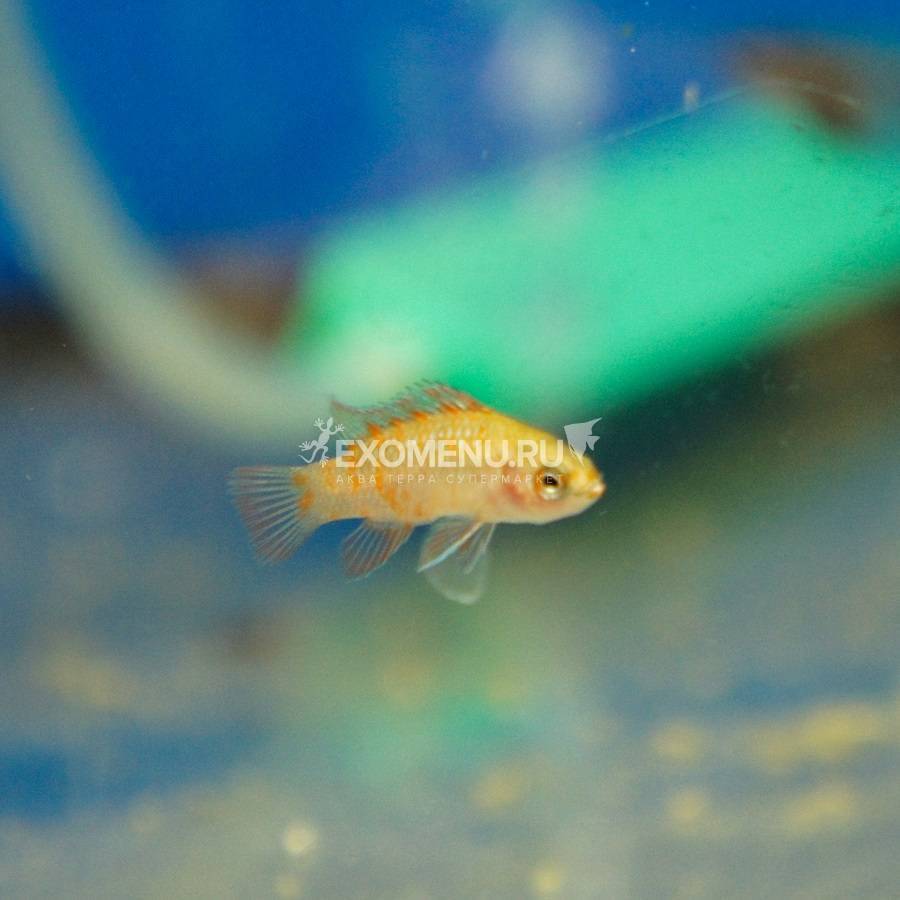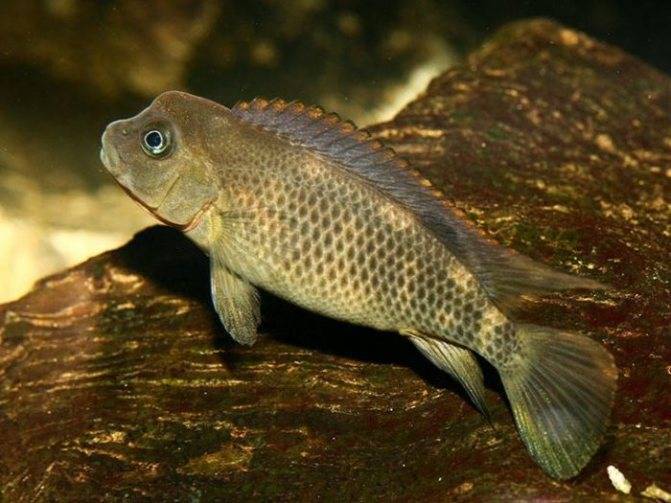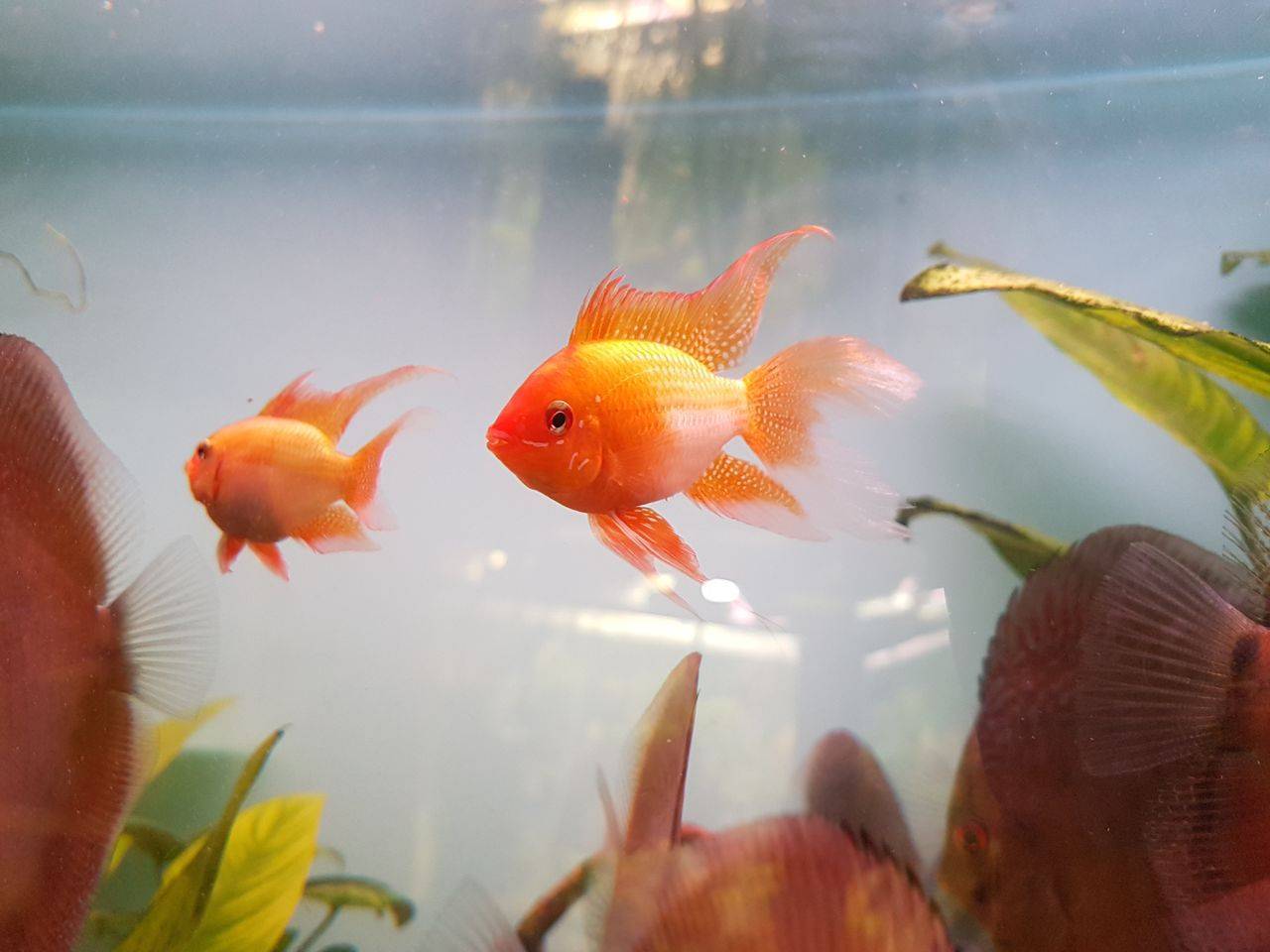When Did Goldfish Became Popular?
It did not take long until the rest of the world caught up with the trend of keeping goldfish as pets. By the 1600s, there were records of the goldfish already being raised in Japan, and in the subsequent years, other parts of Europe.
Apparently, during the 1620s in Southern Europe, the goldfish was highly sought after due to their reflective scales which symbolized good luck and fortune. It was not uncommon for goldfish to be given as an anniversary present.
Finally, the goldfish came to the USA sometime in the 1870s, which brought along an unprecedented wave of fish keeping due to the goldfish’s relatively small size and ease of care.
By the 1900s, there were almost 40 commercial hatcheries in America producing goldfish by the millions annually. Thanks to the hard work of these founding breeders, the goldfish has evolved to become one of the most iconic pet fish in the trade.
Popular Goldfish Types
The goldfish’s color varies among each of its species. The color varies from red-orange to red and white. Basically, this fish species has three major pigment colors that appear to be different colors.
The three main color pigments of common goldfish or fancy goldfish types are erythrophores, xanthophores, and melanophores. Erythrophores are known to be of red pigment color, which makes the gold appear red or orange. Xanthophores are known to be yellow pigments, causing the fish to appear to be yellow goldfish. Melanophores are black pigments and this fish species appears to be black in color.
If selective breeding is done, goldfish can be of different colors from the three major color pigments mentioned above. Colors can be red, orange, yellow, black, gray, white, blue, and brown. Bright, red-colored goldfish are more expensive than orange goldfish. In orange-colored fish species, a balanced number of erythrophores and xanthophores are present, while melanophores’ absence allows the fish body to appear orange.
The black color of goldfish is due to the presence of melanophores such as in black moor goldfish, while in gray-colored goldfish, the number of melanophores in the upper body is greater than in their lower body and decreases consequently. White goldfish are known to have no pigment, unlike other species of goldfish.
In brown-colored goldfish, all three pigments are present in a balanced number; whereas, in blue goldfish, melanophores are placed deep in their skin while the erythrophores and xanthophores are absent. Many of the wild fish species of goldfish are known to change their body color as they mature due to their genetics. The Prussian carp is a wild species whose skin color changes as the carp matures.
Goldfish can also be recognized on the basis of their tails, i.e., single-tailed goldfish and double-tailed goldfish. Some species have a few inches long tail, while some have a veil-like tail.
Goldfish are classified as single-tail or double-tail, with the former containing mostly common goldfish types, such as comet goldfish, and the latter containing mostly fancy goldfish types, with these fancy goldfish having two beautiful caudal fins. Fancy goldfish are mostly bred selectively to enhance the beauty of the house aquarium or tank.
On the basis of single tail types, goldfish can be divided into three subcategories named wild, comet-tailed, and heart-shaped-tailed. The wild subcategory goldfish have a single tail that looks like a fantail but is not deeply forked. In comparison to the wild subcategory, the comet-tailed are longer and more deeply forked.
The tail or caudal fin of the body looks like ribbons but varies a lot from the fancy goldfish tail body. The third category is heart-shaped-tailed. From the name itself, you would come to know that the type of goldfish in this category would have a heart-shaped tail, and the Bristol shubunkin is the only type of goldfish to have a heart-shaped tail.
The other category, double-tail goldfish, consists primarily of fancy goldfish with inches long and beautiful tails. The category is further subdivided into three types: fan-tailed, veil-tailed, and ribbon-tailed. The fantail found on the body of fancy goldfish, which is generally considered to be the tail of a common goldfish, differs on the basis of measurement. The tail is similar to a comet’s tail but shorter by inches in length and less sharp in comparison to the latter. Goldfish types such as ryukin goldfish, oranda goldfish, fantail goldfish, and pearlscale goldfish have fan-tailed fins.
The other sub-category, veil-tailed goldfish, has a tail with more inches in length than that of the fantail. Many claim that telescope goldfish and oranda goldfish belong to this category, but this is not true. The third category is ribbon tails, which have longer forks and tails in comparison to fantails. This type of tail differs from that of the comet-tail and the veil tail by having sharper and deeper forks.
Another type of tail among goldfish is that found on broad-tailed goldfish and on butterfly-tailed goldfish. The broad tail goldfish are fancy goldfish with broad fins and they do not have forks on their tails, while butterfly tail goldfish have a butterfly-shaped tail which are flat with a curve. It is also believed that fancy goldfish have an angled tail peduncle in comparison to common goldfish.

Care
Fancy goldfish are easy to look after, providing the tank is kept clean.
The biggest issue with these fish is that they have the same sized organs as slimmer goldfish, so their organs are bunched tightly together. With everything squashed together, the chance of disease goes up. Some of the most common are swim bladder disorders and liver disease.
Swim bladder problems are easy to spot, the fish will be floating at the top of the tank or sitting at the bottom. The best way to tackle this is by not feeding them for 24 hours, then giving them foods that contain more fiber (vegetables and frozen foods).
Liver diseases don’t show many symptoms, so they can be particularly fatal. To avoid them making sure you are adding quality, nutritional foods to the tank.
Advertisements
Skin diseases can be a big problem for fancies and other ornamental fish. They’re caused by lots of different things (such as parasites or bacteria) and cause lots of symptoms. The symptoms depend on the disease but most skin problems cause spots or color changes around the body. There are lots of medications available that can be added to the tank to treat them.
All fish need clean water, but it’s particularly important for these fish since they are already prone to illnesses. Weekly water changes are vital to keep pollutants low.
High quality moist foods can help to prevent constipation, which can lead to bigger problems. The moisture in the food makes it easier for it to pass through the body for processing.
Some varieties (like the blackmoor) will eat a lot which ultimately makes a mess in the tank. This is another reason to clean the tank regularly.
Types of Goldfish – Conclusion:
It must be overwhelming to have such a long list of varieties to choose from. When you contemplate the list of goldfish types you can easily shortlist them according to the care requirements.
It is also important whether you want them in your pond or a controlled aquarium environment.
Most of all when you choose a goldfish type, you need to see how deep you dig into your pockets.
Goldfish can live easily for over 20 years with the right care. In some cases, it may even cross 40 years outliving any of your pet dogs, cats, etc. Hence, you must choose carefully your type of goldfish.
Some breeds are meant only for experienced hobbyists, whereas, there are many breeds a novice can handle.
I would like to write detailed posts on as many as goldfish types.
In the meantime, we would love to hear from you about the goldfish breeds you have housed and the goldfish types you choose for your tank/pond in the comments section.
The Scientific Explanation
If that still doesn’t make sense, there is a more scientific explanation for how this whole system works. Goldfish produce ammonia which is a product of their direct waste into the water. This ammonia is turned into nitrite and then into nitrates which is a direct by-product of ammonia. This waste is then absorbed through the roots of the plants and stored in various places where the plant will use the nutrients when it is needed. Aquaponics creates a nice symbiotic environment between the goldfish and the plants that they are fertilizing.
Aquaponics Is For Everybody!
Aquaponics uses innovative designs and simple principles that make it work for everybody. The nice thing about aquaponics is that you do not need a specific amount of space or even a definite type of plant. You can create an aquaponic environment using very little effort or even create a more complicated and dynamically strong aquaponics system.
Whatever your choice is, aquaponics can become an easy system to beat the hassle of doing water changes and excess maintenance a normal goldfish setup would require.
Habitat and Tank Conditions
Fantail Goldfish
Goldfish are a domesticated and selectively bred fish, so we’ll take a look at the environment their close relatives (Carps) live in.
Advertisements
Carps live in slightly murky water in the wild with plenty of free floating plants and a dirt bottom to the river bed. They live in still to slow moving bodies of waters such as lakes, rivers, canals and reservoirs which have a water temperature between 42 and 82°F.
It’s important to recreate the same conditions in your tank to keep your fish happy and healthy; it isn’t be hard to replicate.
Some people keep their fancy goldfish in a pond rather than an aquarium. Pond water isn’t usually as clean, which is a big problem for fancies since they’re prone to disease.
Ponds are better suited for larger varieties such as comet goldfish.
Advertisements
Tank Conditions
You’re going to need a big tank for your fancy goldfish, especially if you want a few. You’ll need 20 gallons of water per fish; those over 8 inches need even more space.
Deciding which size tank to get isn’t easy, you need to make sure your goldfish have enough room so they can swim around in the middle of the tank. If the tank is too small, then their growth could be stunted. The minimum tank size you can house one fancy goldfish in is 20 gallons.
In films and on TV a lot of goldfish are shown in glass bowls. Copying this isn’t a good idea because the fish will quickly outgrow the tank. Once you have your tank you need to fill it with substrate, decorations and plants. You can use fine gravel or sand to layer the bottom of the tank.
Plants are particularly important as they keep the water cleaner and oxygenated. They provide hiding spots too, giving fish some safe areas to go to if they’re being harassed.
Every now and then fancies may nibble at the plants; this won’t cause much damage and gives them an alternative food source. Most plants can be used but common examples include anacharis, hornwort, and java fern.
Advertisements
As a cold-water species, goldfish don’t need a heater in the tank unless the water remains below the ideal range of 50-75°F. This also means that you should keep the tank away from external heat sources like radiators.
A filter is the only piece of equipment you need in the tank. It’s worth investing in a good one to prevent disease. Some people choose to add an air pump for water movement and oxygenation.
The pH of the water should be kept between 6.5 and 7.5.
Tank Mates
Your choices for tank mates are limited by the fact that goldfish live in cold waters. You won’t be able to add most other popular freshwater fish that enjoy tropical waters.
Any tank mates should be large enough not to be eaten, should not be nippy and should thrive in the same tank temperature as your goldfish.
Advertisements
Ideal tank mates include:
- Zebra Danios
- Rosy Barbs
- Platies
- Bristlenose Pleco’s
- White Cloud Mountain Minnows
You could also house your goldfish with non-fish inhabitants. Certain shrimp (like ghost shrimp) and snail species (like nerite snails) can be added.
Keeping Fancy Goldfish Together
Your fancies are best kept with their own kind or other peaceful goldfish. They’re slow swimmers so they can’t make a quick escape when being pestered by other fish.
Lots of varieties have long, trailing fins which make them a target for any notorious fin-nippers, which are best avoided.
Don’t overstock the tank as fancy goldfish are particularly messy – they can eat a lot. 20 gallons per individual is recommended.
Advertisements
About the memory of the goldfish
Myth: Goldfishes Have a Three-Second Memory
The myth about goldfishes having a memory of only three seconds is the most common misconception about the fish. It is a typical joke that the reason why the goldfish keeps circling their bowl is that it always forgets doing so. The three-second memory myth is also related to the misconception that fish bowls are the ideal home for them.
Fact: Goldfishes Can Hold Memories Up to Five Months
Goldfishes have a memory span of up to five months! In fact, they can remember their owner, routines, tricks, and have a sense of time. After three to five months, the fish can no longer recognize people and things that don’t come around often. However, they won’t forget their owners and constant things as long as it will remain the same.
In fact, goldfishes and other fishes are capable of learning, retaining the information, and recalling and acting on it a few months later. They can learn tricks like fetching or swimming through finger hoops. Other fishes like the carp, can distinguish different music styles and remember complicated routes in a natural environment setting.
Can Goldfish and Koi be Housed Together?
Despite their differences, slim-bodied goldfish and koi can make wonderful companions.
Both are athletic, strong swimmers with good tolerance for cold weather.
Fancy goldfish are not as good of an option for either the fast kind of goldfish or koi due to their delicate nature.
More on that in another post as well.
Final Thoughts
Now I want to hear it from you.
Have you tried any of these methods to tell the difference between koi and goldfish?
If so, I want to hear how it went.
Or maybe you have some tips I haven’t mentioned.
Featured Image Credit: (L) Val Krasn, Shutterstock, (R) IamSuperPear, Shutterstock
GoldfishGoldfishGoldfish
Single-Tailed Goldfish
Single-tailed goldfish are so called because – you guessed it – they have a single tail. They are “non-fancy” goldfish, which means that physically they still resemble their Prussian carp ancestor pretty closely. Their bodies are slender without any extensive modifications aside from color and possibly a selectively bred long, flowy tail.
Common Goldfish

The most unassuming of all goldfish is the one every fishkeeper and non-fishkeeper has seen and likely even owned at one point. Common goldfish are your average orange, yellow or white childhood pet and also a common feeder fish.
This variety features an elongated body and a short, single tail. It can grow to a rather impressive adult size that many aquarists might not expect: the largest goldfish in the world was a whopping 19 inches. Although not all common goldfish grow this large, they still generally reach a size of at least around 10 inches if conditions are favorable.
Comet Goldfish
 Image Source
Image Source
Comet goldfish are another common single-tailed goldfish type. The difference between comets and common goldfish is in the tail. Commons have a short tail (also referred to as caudal fin), whereas comet goldfish feature a longer and flowier caudal. Quite a decorative sight when viewed from above in a pond!
Like commons, comet goldfish can be found in orange, yellow or white. Additionally, you might also be able to find white comets with blotchy orange coloration. Comets, too, grow quite large and can reach sizes similar to those of common goldfish.
Shubunkin Goldfish
 By Michelle Jo , from Wikimedia CommonsShubunkin are a type of goldfish bred almost exclusively for their coloration. The “standard” version of this variety (known as the American Shubunkin) is almost identical to comet goldfish save for its calico pattern. Shubunkin’s spotted patterns appear in a range of colors including orange, blue, white and black. Pretty decorative, especially considering their mix of matte and shimmering scales.
By Michelle Jo , from Wikimedia CommonsShubunkin are a type of goldfish bred almost exclusively for their coloration. The “standard” version of this variety (known as the American Shubunkin) is almost identical to comet goldfish save for its calico pattern. Shubunkin’s spotted patterns appear in a range of colors including orange, blue, white and black. Pretty decorative, especially considering their mix of matte and shimmering scales.
Looking for a Shubunkin that looks more similar to the classic common goldfish? You might like the short-finned London Shubunkin. For something a little more dramatic you can consider getting Bristol Shubunkin, which have long heart-shaped tails. Both of these sub-varieties will be more difficult to find, but you can try contacting other hobbyists to see if they’re selling any.
Wakin Goldfish
The Wakin goldfish is a bit of an odd duck. It almost seems half fancy and half non-fancy, with a double tail but an elongated body. It is suspected to be the ancestor of the fancy goldfish types we know today, but most sources categorize it as a common due to its body shape.
Long-bodied goldfish like commons and Wakins grow larger than stockier fancies. Additionally, they are much more active swimmers. For this reason the Wakin is seen as a pond fish; in fact, in its country of origin you’ll likely see more Wakins in ponds than the commons we keep here.
Best Goldfish Species for Aquaponics
There are plenty of different goldfish species, but not all are suited for the outdoors. This is a list of which goldfish species should be kept in either an indoor or outdoor setup.
Outdoor
- Comets
- Common
- Koi
- Fantails
- Shubunkins
- Jinkins
These fish do great outdoors. They also seem to be the hardiest and adaptive out of all the goldfish species. Koi are not a species of goldfish, but they are a close relative. These goldfish do best in fluctuating outdoor temperatures and have higher disease resistance.
Indoor/Patio
- Blackmoor
- Telescope eye
- Veiltail goldfish
- Orandas
- Ryukins
- Lionhead goldfish
- Ranchu goldfish
- Celestial eye goldfish
- Pearscales
- Pompom
These goldfish have rounder bodies and have a difficult time getting around. They are also not as tolerant to low temperatures, and this can cause issues in outdoor ponds.
Popular species of Golfish
As stated above, there are many varieties of these beautiful fish currently collecting about 125. However among the most popular specimens we can highlight three types.
Comet fish

It was created in the United States approximately in the year 1880, shortly after the arrival of the goldfish to America. It differs from many of the members of his family by having a longer and more elegant body in addition to having more developed fins having a slightly pointed shape at the ends, as well as having only one tail fin. They can be found in various colors that vary in white, silver, yellow and some red colors. Another feature is that they are very good swimmers and very agile.
Koi fish.
These are the specimens of goldfish par excellence, being adaptable to many environments and water conditions, so they are highly recommended for aquarium beginners.
They come from Japan, where the word koi means love or affection. The koi fish breeding grew so important that in the early twentieth century Japanese koi fish ponds became very popular, they even have a legend that is based on their beauty and virtues. In many countries, outside the Asian continent, the figure of breeder of orange fish or professional golden carp has become common.
Oranda fish.
This species arose in China and Japan approximately in the years 1590, when its breeding and crossing of species began. In the Chinese Empire and even today it is known as «The Flower of Water». It has a long and deep body presenting a wide belly. Its dorsal fin is large and elegant, while its tail is fourfold. A special feature is its cap or crown that grows on the top of its head with a rough appearance, which suggests an afro of the 80s.
Let’s meet them
Choosing the Right Goldfish for Your Fish Tank or Pond
Okay. You’ve seen the list (and surprisingly, there are still a few more types out there!), so you might be feeling a bit overwhelmed right now as you consider which breed of goldie might be best for your tank. Take a few moments, step back, breathe a little, and contemplate these things.
- What care level are you able to provide? If you’re not an expect, you really should only consider easy to moderate care varieties.
- What size fish tank can your space handle? Some goldies need really large tanks to do well – and of course, you want them to thrive!
- Do you have other pets who may startle or hunt your goldies? If you’ve got a cat who’s keen on watching that fish tank (I’m looking at you, Fluffy!), you should avoid the more delicate breeds unless they will be kept in completely separate spaces. Fish prone to injuries are also prone to startling easily and may be overly stressed or even more prone to accidents if other critters are bothering them.
- Is this breed suitable for ponds? If you’ve looking to stock your pond outdoors, keep in mind only those breeds which can handle an outdoor life!
- What other fish do you intend to stock (or already have at home)? Make sure the varieties of goldfish you’re considering will play well with others.
- What kind of décor do you want in the tank? If you’re into castles and rocks, delicate fish with hoods, bubble and telescope eyes, and similar traits are not a good match for that kind of habitat.
- What kind of budget do you have? Some breeds are common and easy to come by. Some, not so much. Be sure the ones you’re looking to stock fit without your budget as well, and, ideally, won’t have to travel a great distance to get to you. Long distance travel – heck, even short distance travel! – can be traumatic for fish, so avoid buying ones great distances away.
Consider all these things, especially focusing on the care of the goldfish, before you purchase. They will thank you for giving them a good life through their beauty, their energy, and their happy greetings when dinner time comes.
Fancy Goldfish Types
Fancy goldfish are mostly double-tail goldfish which are divided into two categories: streamlined body and egg-shaped body. The egg-shaped body is further divided into dorsal-finned and non-dorsal-finned varieties.
The number of caudal and anal fins of double-tailed or fancy goldfish are two. These fish are one of the more expensive fish species. The streamlined-bodied double long-tail fish includes the wakin’ goldfish, the watonai goldfish, and the jikin goldfish. The wakin goldfish is most often similar to the common goldfish but differs on the basis of its double caudal fins. The watonai goldfish is the goldfish breed that originates from the wakin and the ryukin goldfish.
Jikin goldfish are red and white in color and have 12 points of red in a unique pattern or design on their body. This fish species evolved from the wakin goldfish. The egg-shaped goldfish has two types of goldfish: fish with dorsal fins and fish that lack a dorsal fin. Fish with a dorsal fin are fantail goldfish, veil tail goldfish, ryukin goldfish, pearlscale goldfish, telescope goldfish, and oranda goldfish, while pompom goldfish, lionhead goldfish, and eggfish goldfish lack a dorsal fin.
A dorsal fin can be found on some celestial eye goldfish. The evolution of the ryukin goldfish has led to the origin of the bubble-eyed goldfish. Telescope eyes are weaker in comparison to bubble eyes. The fantail goldfish does not have a shoulder hump and is a goldfish species with an egg-shaped body. These fish have two caudal fins and two anal fins.
Veil-tailed goldfish have long fins that are more often nipped by other species of fish because other species of fish are attracted to their fins. Tails and fins of this species appear to be like a veil. Ryukin goldfish are known to have a shoulder hump. Most of their features resemble those of the fantail goldfish. The curled gill goldfish is a goldfish species with gills in an outward direction and has been named after this specific characteristic.
The dorsal finless species, the bubble eye goldfish, is a small, fancy goldfish species known for its large, brown eyes along with large fluid sacs. These sacs are soft and are very delicate and have been known to get caught in aquarium filter water uptake valves. The bubble-eyed goldfish has developed from an eggfish goldfish. Fancy goldfish of these types need utmost care and a tank with a larger surface area.
Another type of goldfish is the pond goldfish, which usually lives in ponds and is named the celestial eye goldfish, the telescope goldfish, and the bubble eye goldfish. This species of goldfish is kept mostly in ponds due to its delicate eyes. A celestial eye goldfish is sometimes called a sky gazer because its eyes are always in an upward direction.
Here at Kidadl, we have carefully created lots of interesting family-friendly facts for everyone to enjoy! If you liked our suggestions for different types of goldfish, then why not take a look at different types of bulldogs or goldfish fun facts for kids?
Shubunkin Goldfish
Shubunkin is one of the handsome matt Goldfish types that was first bred in Japan in 1900.
The Shubunkin Goldfish is single-tailed, somewhat resembling the Common Goldfish in shape, but its coloration is unique. The background color is usually bright blue, being unevenly blotched with intense black, red, gold and brown.
The translation of Shubunkin is ‘red brocade’. In the U.K., two varieties of Shubunkin Goldfish have been developed – the ‘London’ and ‘Bristol’, both of which have similar coloration but different finnage.
The fins of the London Shubunkin Gold Fish resemble those of the Common Goldfish, while the Bristol Shubunkin Gold Fish has a longer tail and a higher dorsal fin as seen in the Comet Goldfish. Both varieties of Shubunkin Goldfish are hardy and will breed in large indoor tanks or outdoor Goldfish ponds.
Young Shubunkin Goldfish assume adult coloration fairly rapidly and if well fed, will reach sexual maturity in less than a year. But they are delicate until 6 months of age and should not winter in outside ponds until this age.
Wrapping Up
When we first got interested in aquariums we were blown away by how many different types of goldfish there are. There’s a chance you are too!
With so many different options on the table, it can seem a bit overwhelming to pick your favorite. There’s a lot to like about each of them.
That’s where the beauty of the goldfish makes it easy. Aside from some behavioral incompatibilities, acquiring and keeping any of breeds on our list really isn’t that challenging.
Some types are great for ponds too which really opens up your options. You could have a couple of fragile goldfish breeds in the house, and some hardy ones outside (we know a few aquarists who do this).
How to take care of Goldfish in Captivity?
For optimal development each adult specimen merits an aquarium with a minimum capacity of 37 liters of water or more. With this the myth that goldfish can be kept in round and small fish tanks as many times seen on television is disproved. With this type of captivity only the fish gets sick and dies little by little, since they don’t have an adequate place to grow and swim.
All the varieties of goldfish are characterized by a fairly peaceful behavior, being able to live with fish of the same species or other types of specimens.
Which Fish are Compatible with Goldfish?
The fish compatible with goldfish are: rotengles, tenches, koi, Corydora paleatus, Chinese Neons which require specialized care. Snails such as ramshorn and apple snail are useful in eating any algae while remaining safe for aquatic plants. But if there is no control over the fish population, the ponds can easily fill up and overpopulate.
How much does a goldfish live?
The goldfish life expectancy in captivity is at least 10 years in a sufficiently spacious aquarium, but the usual duration is 15 years. The smaller the aquarium, the shorter the duration (less than 5 years).
On the contrary, the higher the volume the greater the increase in this period (from 20 to 25 years). To date, the life expectancy of a goldfish has been about 43 years.
let’s meet these stunning fish called angels koi
Caring for Goldfish in an Aquaponic System
There is minimal labor involved in caring for your goldfish in aquaponics, and most of the labor can be quite fun!
Feeding
Your job is to ensure that your goldfish are being fed properly in the aquaponic system. Choosing high-quality food will result in a healthier goldfish that will produce healthy and frequent waste for the plants. The goldfish should be fed a varied diet rich in both protein and plant matter as they are omnivores. A good commercial sinking pellet combined with supplements like bloodworms, mosquito larvae, tubifex worms, or freeze-dried shrimps. Your goldfish should also be fed human vegetables like deshelled-peas, cucumber, blanched lettuce, and zucchini. By feeding lots of plant matter, your goldfish will be able to pass waste more efficiently.
Image Credit: josefkubes, Shutterstock
Water changes
This only applies to when you first start an aquaponic system as the plants will be small and must still adapt to the new environment which means they will not be absorbing waste as efficiently. Only a small water change of approximately 20% to 40%. This will limit the amount of ammonia that could potentially harm the goldfish and even burn the plant’s roots.
This can be done by a simple bucket water change. If you want to be environmentally savvy, you could even water the garden with this water instead of disposing of it down the drain. Aquarium water can be beneficial to house plants, outdoor trees, and even grass.
Don’t worry, you will not have to do water changes for very long! As the aquaponic system matures, the plants will take care of maintaining good water quality.
Health Checks
You should regularly inspect the goldfish in the system to ensure they have no signs of disease or injuries. If you do notice an issue with some of the goldfish, you can set up a small tank or plastic tote to administrate treatment. Never directly add medication into the aquaponic system as it will harm the plants.
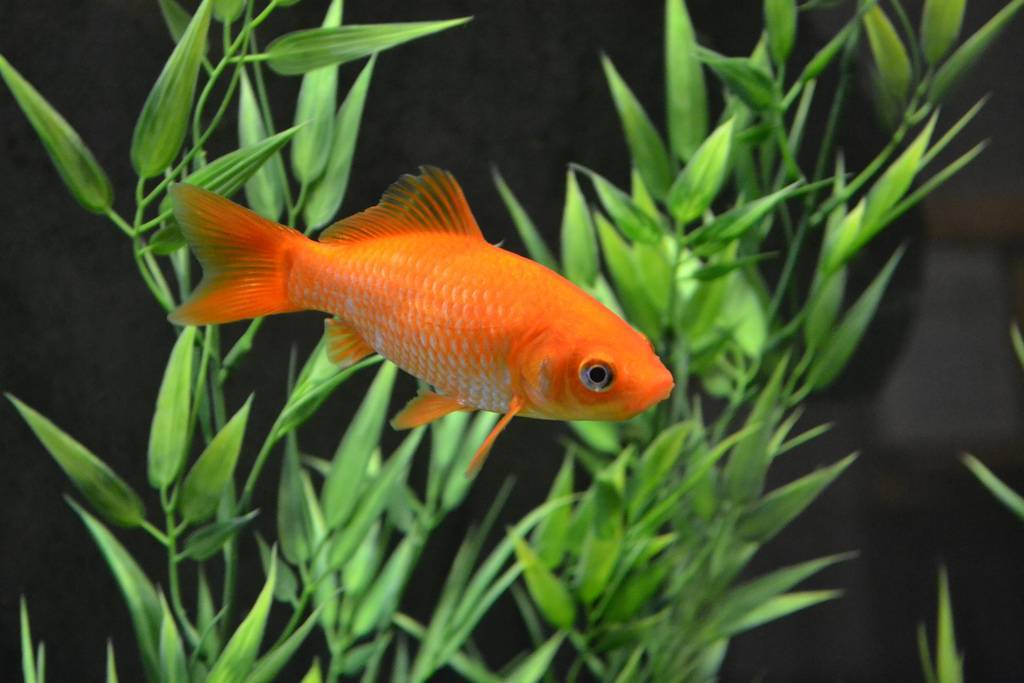
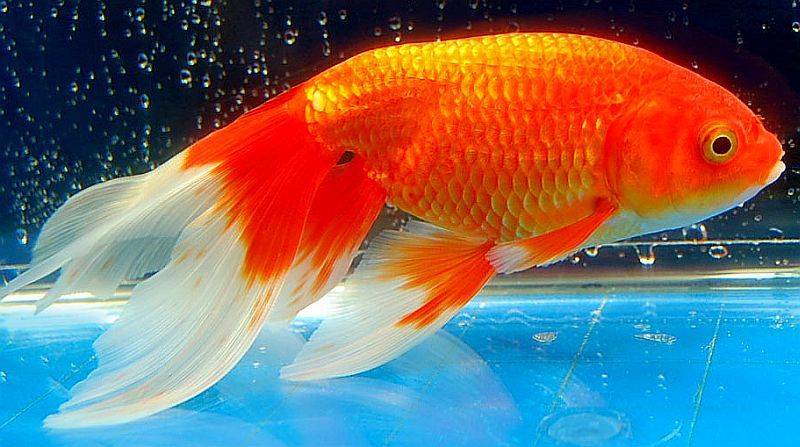
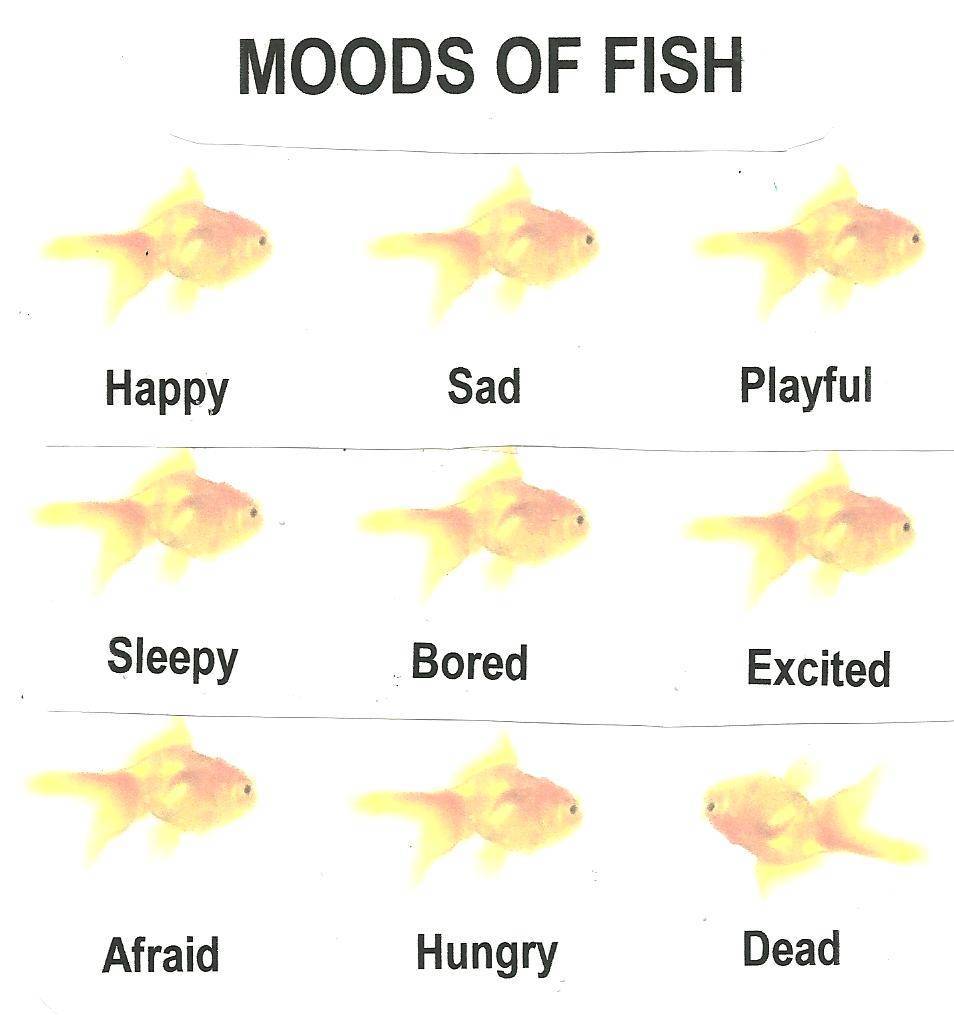

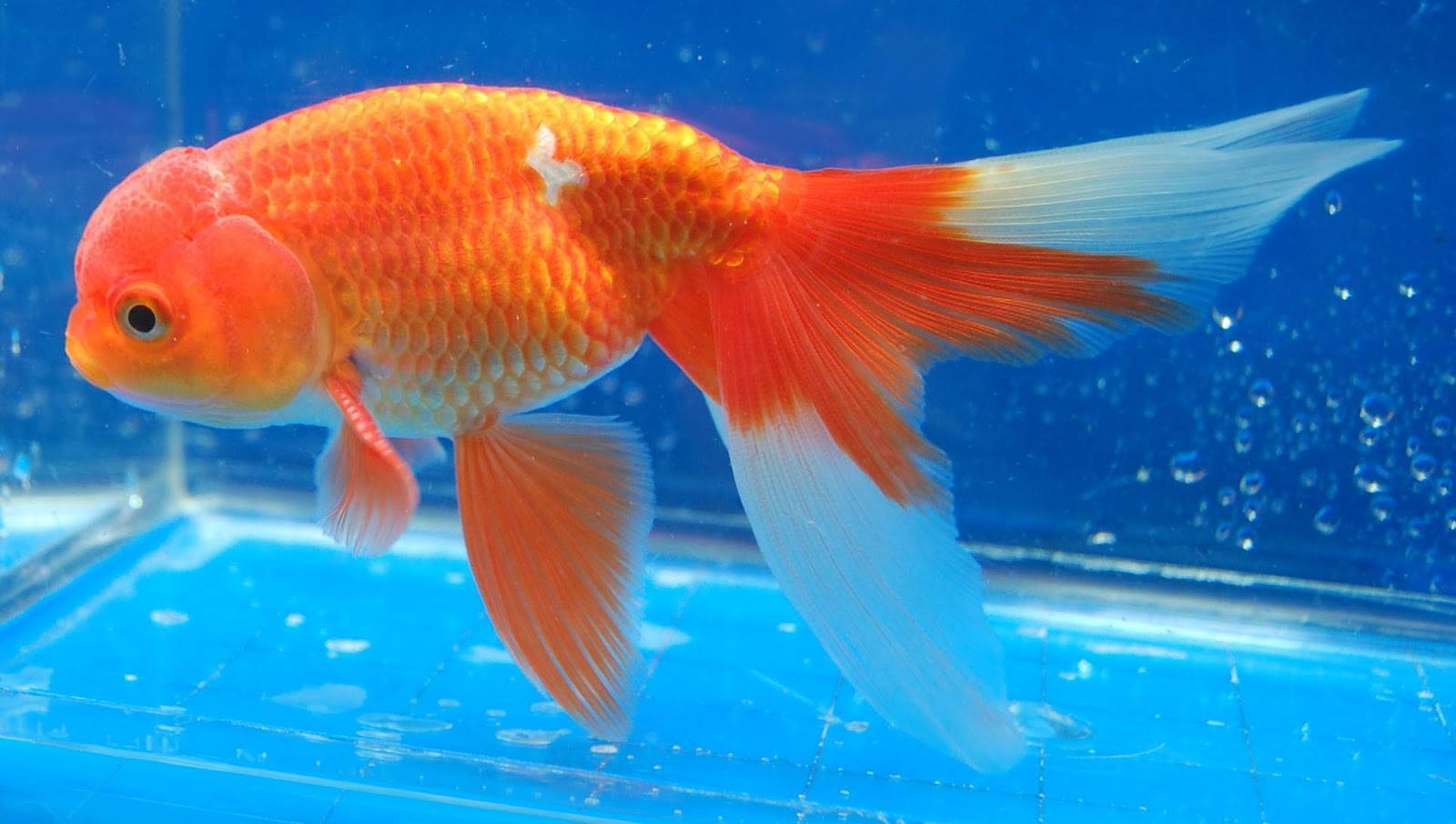
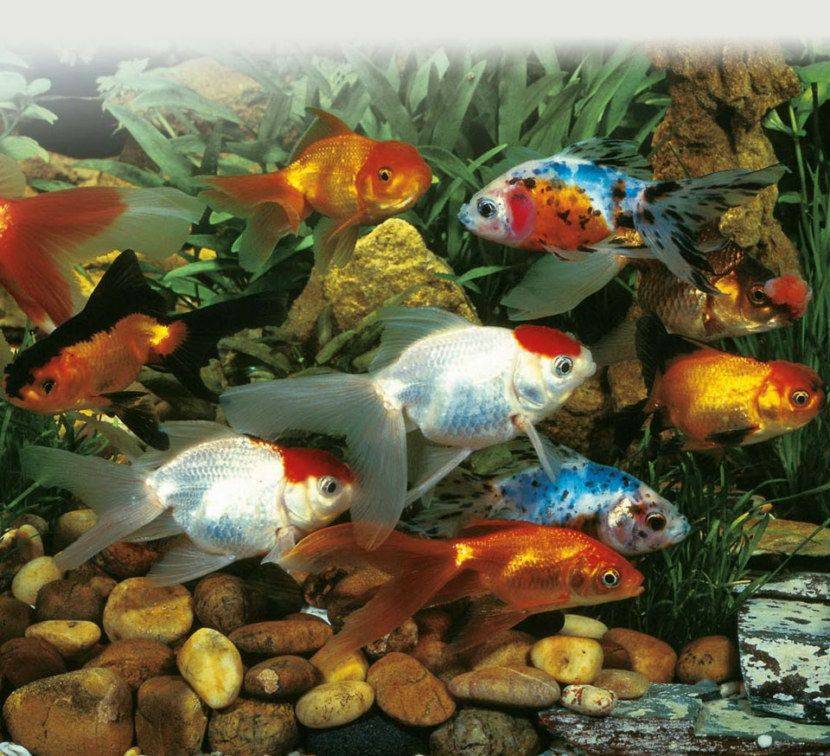



![Goldfish aquaponics: stocking, feeding & care [ultimate guide] | it's a fish thing](https://akvariumistica.ru/wp-content/uploads/a/5/e/a5e8bdc29a93fce6954bd639a535e25f.jpeg)



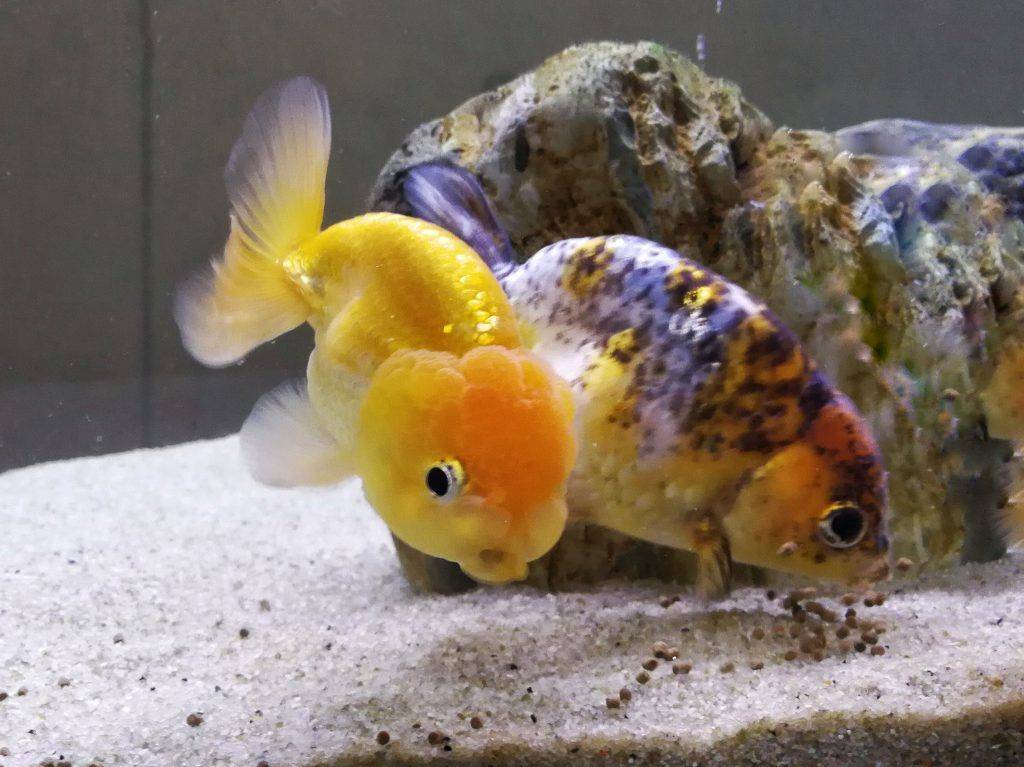
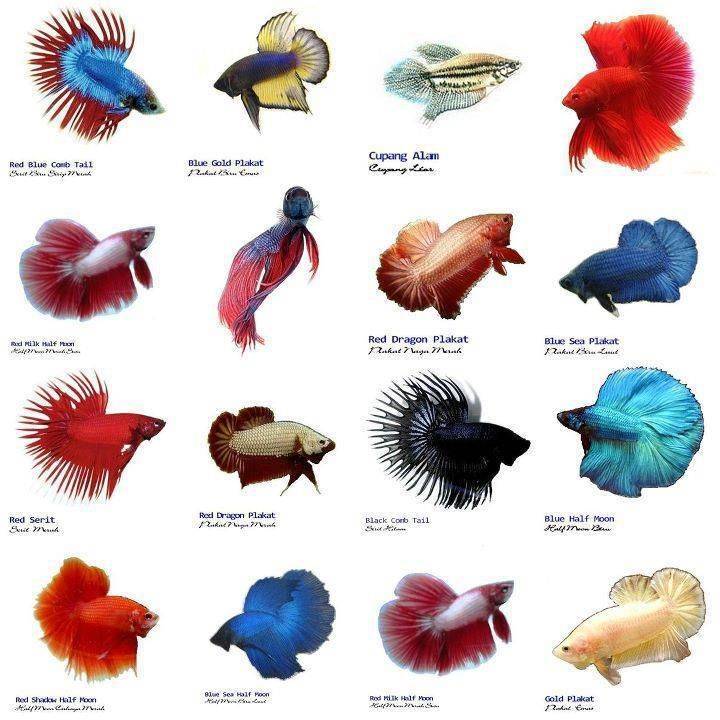
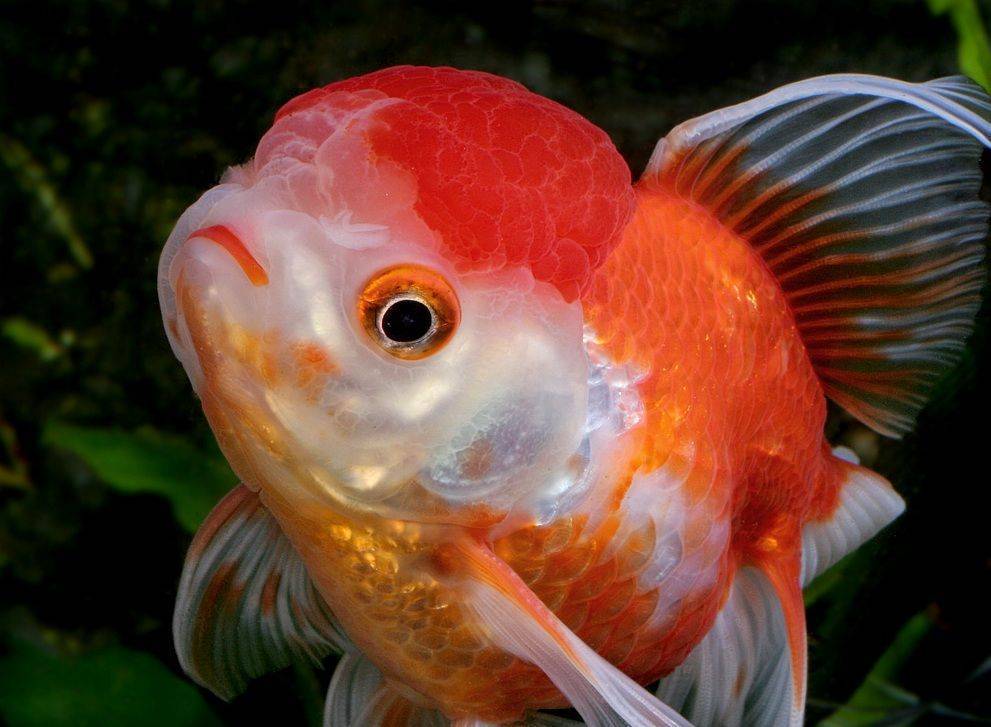





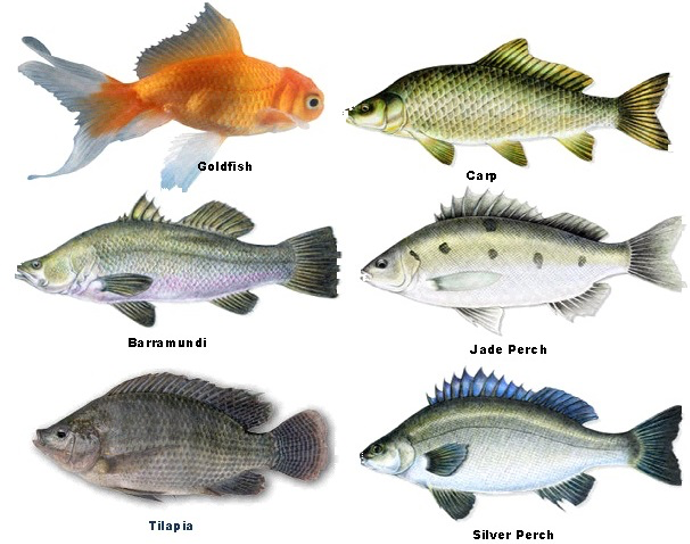
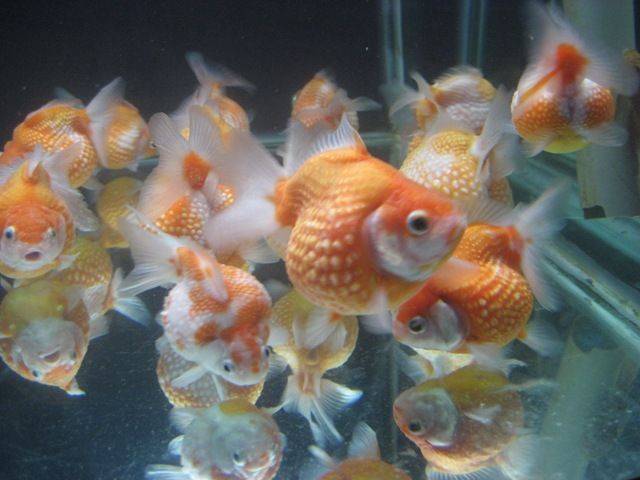
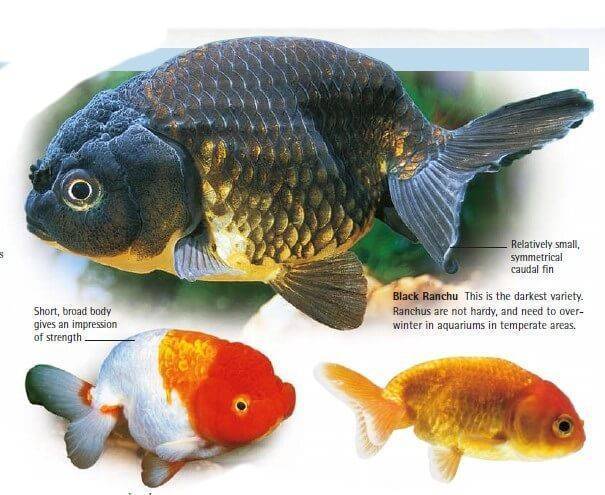
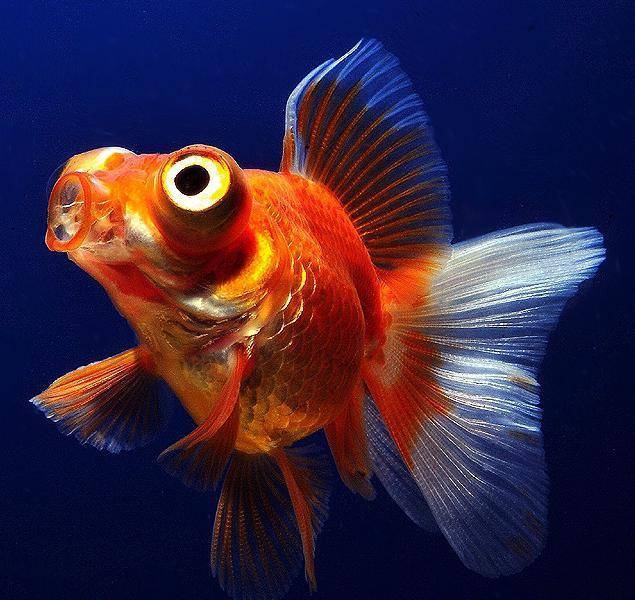


![Goldfish aquaponics: stocking, feeding & care [ultimate guide]](https://akvariumistica.ru/wp-content/uploads/0/f/6/0f60e6bed6917b82cbf77f0ebab54511.jpeg)


